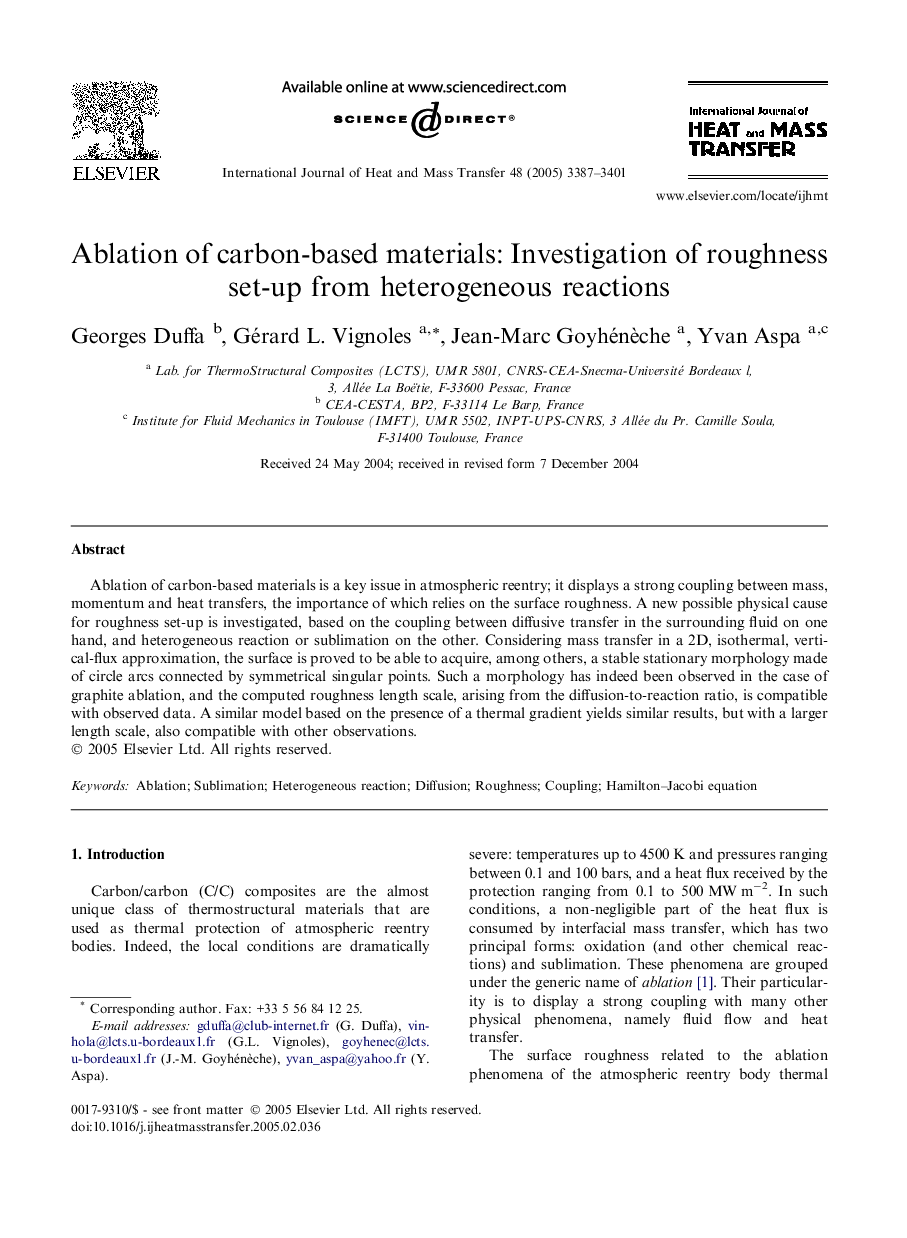| Article ID | Journal | Published Year | Pages | File Type |
|---|---|---|---|---|
| 662386 | International Journal of Heat and Mass Transfer | 2005 | 15 Pages |
Abstract
Ablation of carbon-based materials is a key issue in atmospheric reentry; it displays a strong coupling between mass, momentum and heat transfers, the importance of which relies on the surface roughness. A new possible physical cause for roughness set-up is investigated, based on the coupling between diffusive transfer in the surrounding fluid on one hand, and heterogeneous reaction or sublimation on the other. Considering mass transfer in a 2D, isothermal, vertical-flux approximation, the surface is proved to be able to acquire, among others, a stable stationary morphology made of circle arcs connected by symmetrical singular points. Such a morphology has indeed been observed in the case of graphite ablation, and the computed roughness length scale, arising from the diffusion-to-reaction ratio, is compatible with observed data. A similar model based on the presence of a thermal gradient yields similar results, but with a larger length scale, also compatible with other observations.
Keywords
Related Topics
Physical Sciences and Engineering
Chemical Engineering
Fluid Flow and Transfer Processes
Authors
Georges Duffa, Gérard L. Vignoles, Jean-Marc Goyhénèche, Yvan Aspa,
